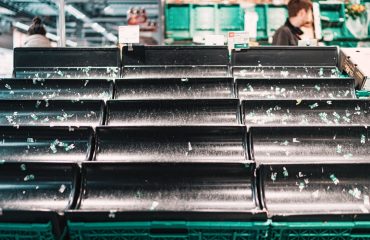The machinery manufacturing industry relies heavily on a consistent and reliable supply of high-quality steel. From the smallest component to the largest frame, steel forms the backbone of countless machines. Securing the right steel, in the right quantity, and at the right price is crucial for profitability and timely project completion. This comprehensive guide delves into the intricacies of steel supply for machinery manufacturing, offering insights into sourcing, types, quality control, cost optimization, and future trends.
Sourcing Steel: Finding the Right Supplier
Finding a reliable steel supplier is paramount. The process goes beyond simply finding the cheapest option; it requires careful consideration of several factors. Reputation and track record are essential. Look for suppliers with a history of on-time delivery and a commitment to quality. Consider their certifications, such as ISO 9001 for quality management systems. Geographic proximity can also significantly impact costs and lead times, reducing transportation expenses and potential delays. Investigate their capabilities – do they offer value-added services like cutting, forming, or heat treating? This can streamline your manufacturing process and potentially reduce costs.
Diversifying your supply chain is also a wise strategy. Relying on a single supplier exposes your business to significant risk in case of disruptions, such as natural disasters, labor disputes, or supplier insolvency. Having multiple suppliers ensures business continuity and provides leverage for negotiating better prices.
Understanding Steel Grades and Their Applications in Machinery
Steel is far from a homogenous material. Numerous grades exist, each with unique properties tailored to specific applications. Understanding these grades is crucial for selecting the optimal steel for your machinery components. For instance, high-carbon steel offers exceptional strength and hardness, making it ideal for high-stress components like gears and shafts. Low-carbon steel, on the other hand, is more easily machinable and weldable, suitable for less demanding parts. Stainless steel provides superior corrosion resistance, vital for applications exposed to harsh environments. Tool steels, known for their exceptional wear resistance, are essential for cutting tools and dies.
Selecting the appropriate grade requires careful consideration of factors such as tensile strength, yield strength, hardness, ductility, and weldability. Consult with your steel supplier and engineers to determine the best steel grade for each component to optimize performance and longevity.
Quality Control: Ensuring Steel Conformance to Specifications
Maintaining rigorous quality control throughout the steel supply chain is non-negotiable. This begins with verifying the steel’s chemical composition and mechanical properties upon delivery. Independent testing may be necessary to ensure the steel conforms to the specified grade and meets the required standards. This might involve tensile testing, hardness testing, impact testing, and metallurgical examination. Non-conforming steel must be rejected to prevent defects in the final product.
Implementing a robust quality management system (QMS) within your own manufacturing process is equally critical. This involves tracking the steel’s traceability from its source to the finished product, facilitating prompt identification and resolution of any quality issues. Regular audits and inspections are necessary to ensure the QMS remains effective and up-to-date.
Optimizing Steel Costs: Strategies for Reducing Expenses
Steel costs can significantly impact the overall profitability of machinery manufacturing. Optimizing steel costs requires a multi-pronged approach. Negotiating favorable contracts with suppliers is crucial, leveraging volume discounts and exploring long-term agreements. Careful planning and efficient inventory management can also reduce storage costs and minimize waste. Minimizing material waste through optimized design and precise cutting techniques is another effective strategy. Exploring alternative steel grades or designs that achieve the same functionality with less material can lead to significant cost savings without compromising quality.
Investing in advanced manufacturing technologies, such as computer-aided design (CAD) and computer-aided manufacturing (CAM), can further enhance efficiency and reduce material waste.
Future Trends in Steel Supply for Machinery Manufacturing
The steel industry is constantly evolving, and understanding future trends is vital for machinery manufacturers. The increasing demand for sustainable manufacturing practices is driving the adoption of recycled steel and the development of more environmentally friendly steel production processes. Advances in steel technology are leading to the creation of new steel grades with enhanced properties, such as higher strength-to-weight ratios and improved corrosion resistance. The adoption of digital technologies, including blockchain technology for supply chain transparency and artificial intelligence (AI) for predictive maintenance, is also transforming the steel supply chain.
Staying informed about these trends and adapting your sourcing strategies accordingly will be crucial for maintaining a competitive edge in the machinery manufacturing industry.
By carefully considering these aspects of steel supply, machinery manufacturers can ensure a reliable, cost-effective, and high-quality supply of steel, ultimately leading to improved profitability and a stronger competitive position.
Tags: steel supply, machinery manufacturing, steel sourcing, steel quality control, steel cost optimization




